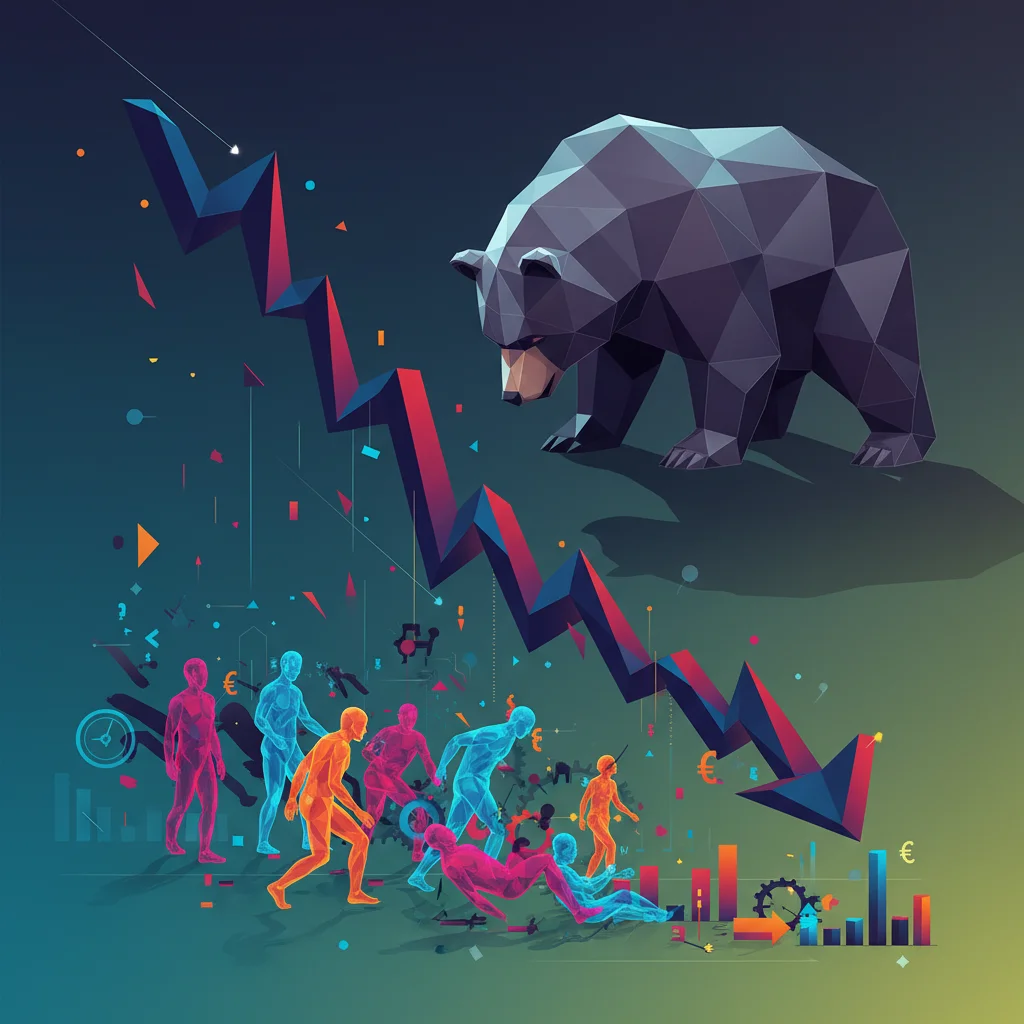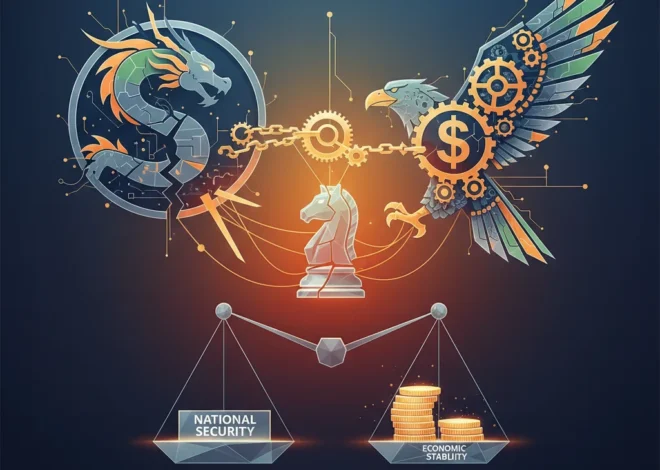
The Ultimate Bear Market: When Human Lives Become a Lagging Economic Indicator
In the world of finance and investing, professionals are trained to meticulously track indicators. We watch CPI for inflation, jobless claims for labor market health, and PMI for manufacturing sentiment. We build complex models for trading and obsess over quarterly earnings. Yet, one of the most stark and telling indicators of our economic health doesn’t appear on any Bloomberg terminal. It’s found in the quiet, devastating reports from frontline charities.
A recent report has delivered a figure that should stop every analyst, investor, and business leader in their tracks. According to homelessness charity St Martins Trust, the number of deaths among the homeless population has nearly doubled in just one year. The charity’s chief executive, Dr. Jan Sheldon, labeled this horrifying year-on-year increase as “unforgivable”. While “unforgivable” is a moral judgment, for those of us steeped in the language of markets and economics, it’s also something else: a critical data point signaling profound systemic failure.
This isn’t merely a social issue to be siloed off to non-profits and government agencies. It is a lagging indicator of deep-seated economic dysfunction and a leading indicator of future social and economic instability. When the most vulnerable members of a society are perishing at an accelerating rate, it reflects a structural breakdown in housing, healthcare, and economic opportunity—the very pillars upon which a stable and prosperous economy is built.
The Anatomy of a Market Failure: Deconstructing the Crisis
To understand why this tragedy is unfolding, we must look past simplistic narratives and examine the macroeconomic forces at play. This crisis is the culmination of decades of policy choices, market dynamics, and a growing chasm between financial markets and the real-world economy experienced by millions.
The primary driver is, without question, the housing crisis. For years, housing has been treated less as a fundamental human need and more as a speculative asset class, a popular vehicle for investing. This financialization, coupled with restrictive zoning laws and a failure to build adequate supply, has created a brutal mismatch. Central banking policies, particularly the prolonged period of low interest rates followed by a rapid tightening cycle to combat inflation, have whipsawed the market. While asset owners benefited immensely from the former, the latter has made financing new construction prohibitively expensive and pushed mortgage rates to levels that lock out a generation of potential buyers.
The result is a market where prices are divorced from local wage realities. This divergence is not a minor statistical anomaly; it is a chasm. Consider the trend over the past two decades in the United States, a pattern mirrored in many developed economies:
| Year | Median Home Price Index | Median Household Income Index | Affordability Gap (Price Index – Income Index) |
|---|---|---|---|
| 2000 | 100 | 100 | 0 |
| 2010 | 145 | 115 | 30 |
| 2020 | 210 | 135 | 75 |
| 2023 | 295 | 142 | 153 |
Source: Fictional data for illustrative purposes, based on trends from sources like the Federal Reserve Economic Data (FRED).
This table illustrates a stark reality: the cost of a primary asset essential for stability has skyrocketed, while the income needed to acquire it has stagnated. For those at the bottom of the economic ladder, this gap isn’t an inconvenience; it’s an eviction notice waiting to happen. A single unexpected expense—a medical bill, a car repair—can be the catalyst that pushes a household over the edge. This is the brutal calculus of our modern economy.
The P&L of Neglect: Calculating the True Cost of Homelessness
For a finance-minded audience, the moral argument, however powerful, is often insufficient. So let’s talk in terms of pure, cold, hard numbers. Allowing homelessness to fester is one of the most fiscally irresponsible decisions a society can make. It is a classic example of being “penny wise and pound foolish.”
The costs of managing homelessness on the back end are astronomical compared to the costs of preventing it. A person experiencing chronic homelessness interacts with a variety of expensive, reactive public systems:
- Emergency Healthcare: Lacking preventative care, health conditions worsen, leading to frequent and costly emergency room visits and hospital stays.
- Judicial and Law Enforcement: A significant portion of police time and court resources are spent addressing issues related to public homelessness, from minor infractions to more serious incidents.
- Social Services: A complex, often inefficient web of emergency shelters and support services consumes vast public resources.
Multiple studies have quantified this drain. A landmark analysis by the National Alliance to End Homelessness found that chronic homelessness can cost taxpayers between $30,000 and $50,000 per person per year. In contrast, providing permanent supportive housing costs significantly less while producing vastly better human outcomes. This isn’t a welfare program; it’s a strategic investment with a clear, positive ROI. It reduces strain on public systems, improves health outcomes, and allows individuals to re-engage with the workforce, turning a net drain into a potential tax-paying contributor to the economy.
A New Asset Class: Investing in Solutions with Finance and Technology
The scale of this problem is far too large for governments or non-profits to solve alone. It demands the capital, innovation, and efficiency of the private sector. This is not a call for charity, but a call for a paradigm shift in investing and a recognition of a massive, underserved market: the market for societal stability. Here’s how the tools of modern finance and technology can be deployed.
1. The Rise of Impact Investing and Social Bonds
Impact investing, which seeks measurable social or environmental impact alongside a financial return, is no longer a niche. Instruments like Social Impact Bonds (SIBs) offer a compelling model. Private investors provide upfront capital for a program—for example, a “Housing First” initiative. If the program achieves its pre-agreed goals (e.g., reduced hospital admissions, stable housing for a certain percentage of participants), the government repays the investors with a modest return. It’s a pay-for-performance model that de-risks innovation for the public sector and provides a viable return for investors.
2. The Fintech Revolution for Financial Inclusion
Financial technology, or fintech, has the potential to be a game-changer. One of the biggest barriers for those on the brink is access to the formal banking system.
- Identity Verification: A lack of permanent address or government ID can make opening a bank account impossible. Blockchain technology offers a path to secure, decentralized, and portable digital identities that are not tied to a physical address, unlocking access to financial services.
- Alternative Credit Scoring: Traditional credit models penalize those with thin or non-existent credit files. Fintech firms are developing new models that use alternative data (like rental and utility payments) to assess creditworthiness, opening doors to fair lending for housing deposits or small business loans.
- Financial Management Tools: Simplified budgeting and savings apps can provide crucial financial literacy and management tools for low-income households, helping them build a buffer against economic shocks.
3. Public-Private Partnerships (PPPs) in Housing
The private sector can and should play a larger role in developing affordable housing. This requires creative partnerships with municipalities. Cities can offer incentives like density bonuses, expedited permitting, or long-term tax abatements to developers who commit a percentage of their units to affordable housing. This leverages private sector efficiency in construction and management while achieving public policy goals.
Conclusion: From Lagging Indicator to Leading Opportunity
The doubling of deaths among the homeless is a tragedy of immense proportions. But it is also a data point flashing red on the dashboard of our economy. It signals that the foundational elements of our society—housing, health, and opportunity—are cracking under the strain of inequality and market dysfunction.
For the astute investor, business leader, and finance professional, this is more than a headline. It is a call to reassess risk and re-evaluate opportunity. The social fabric is not an externality to the market; it is the very platform upon which the market operates. Ignoring its decay is the riskiest investment strategy of all.
The solution lies not in lamenting the problem, but in applying the same ingenuity, capital, and technological prowess that we dedicate to the stock market and trading algorithms. By investing in housing, promoting financial inclusion through fintech, and building innovative partnerships, we can address the root causes of this crisis. This is the ultimate form of long-term value investing—an investment in a stable, inclusive, and prosperous economy for all.


